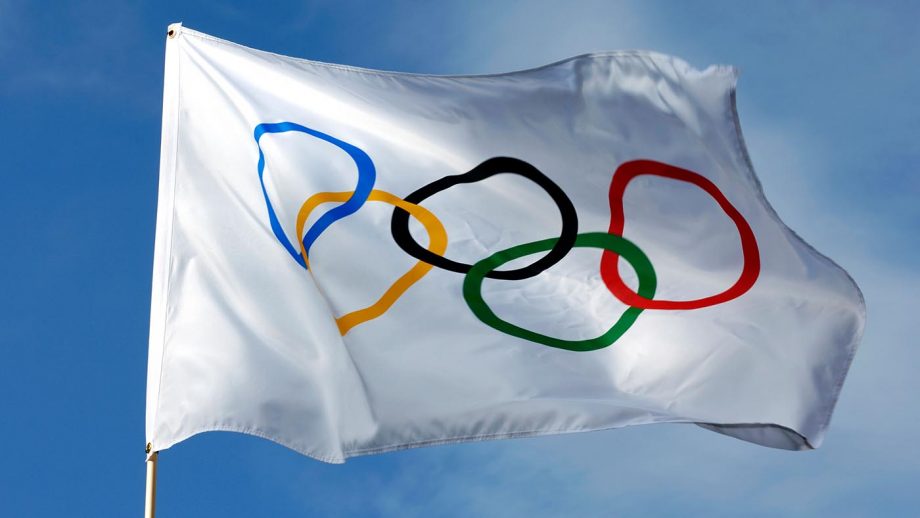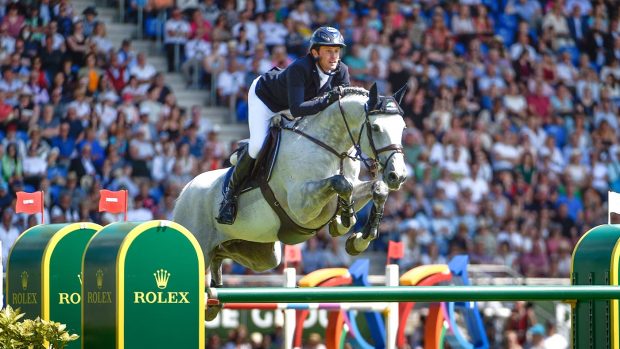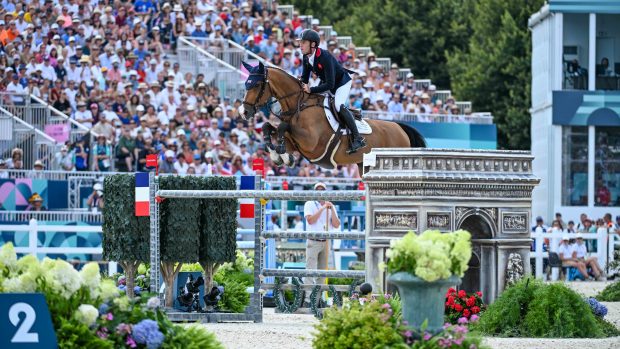FORMER exhibition rider Sabine Schut-Kery emerged as a potential medal contender with a superb test on the first day of the Tokyo Olympic dressage grand prix competition. The Olympic debutante scored 78.416% riding Sanceo, behind group three leader and Olympic favourites Jessica von Bredow-Werndl and TSF Dalera.
Sabine, riding for the USA, conjured a light and fluent test from the stocky San Remo stallion with his piaffe being a highlight. Group three was the toughest heat of day one, with Carl Hester, Hans Peter Minderhoud and Jessica all top contenders for a place in Tuesday’s final. Sabine produced the 15-year-old Sanceo to peak just when it mattered, posting a personal best grand prix score.
“To come into this ring – it’s so beautiful, the colours, the lighting, the set-up,” Sabine said. “It’s a great feeling and I think my horse feels the same way.
“I could have done the zigzag way better, but I was really happy my horse was with me. I felt like I had plenty of power and it was really nice to see how he coped. I’m so proud of him for working with me in the humid conditions.”
Sabine has had Sanceo since he was a three-year-old and has produced him up the levels.
“It’s extra special now to be at the pinnacle of grand prix, at the Olympics, representing my country,” added Sabine, who was on the gold medal-winning team at the 2015 Pan American Games.
From bowing in a side-saddle to grand prix dressage
Sabine, 52, grew up in a non-equestrian family in Germany. She learned to ride at 10, moved to the USA in 1998, and is now living in California. Although this was her first Olympics, Sabine knows how to teach a horse to show off its talent. Before she specialised in dressage, Sabine was a demo rider, performing in the entertainment slots at large shows such as Stuttgart and Aachen.
“We went to a lot of fairs in Europe – Italy, Switzerland and all kinds of countries – and performed there or alongside big competitions,” she explained. “We did all the movements from dressage, like the whole grand prix, but also the tricks, so we taught the horses to lie down, bow, and sit or rear on command.”
An added complication was performing the whole performance side-saddle.
“They had to do pirouettes on both sides, whether there’s a leg there or not,” she says. “Or we’d ride one and drive one in front.
“You can implement a lot of feel according to what your horse is ready to do. But the passion for dressage was always there. I really, really like riding from letter to letter, making it happen at C. But it’s a nice combination of also learning how to read an animal, to make good decisions and understand the inside of an animal.”
The empty stands in Tokyo might be a far cry from the sell-out crowds of her former career, but Sabine knows exactly how to make her horse tick as she heads to Tuesday’s grand prix special.

Brits start strongly as the Netherlands top the teams in the Tokyo Olympics dressage grand prix

Who will qualify for the Tokyo Olympics grand prix freestyle? H&H’s dressage editor makes her predictions…

Olympic dressage teams: who’s heading to Tokyo?

Bluffer’s guide to dressage at the Tokyo Olympics
Horse & Hound’s dressage editor explains the main changes and what they mean for the format of the dressage competition...

Subscribe to Horse & Hound magazine today – and enjoy unlimited website access all year round
Horse & Hound magazine, out every Thursday, is packed with all the latest news and reports, as well as interviews, specials, nostalgia, vet and training advice. Find how you can enjoy the magazine delivered to your door every week, plus options to upgrade your subscription to access our online service that brings you breaking news and reports as well as other benefits.




